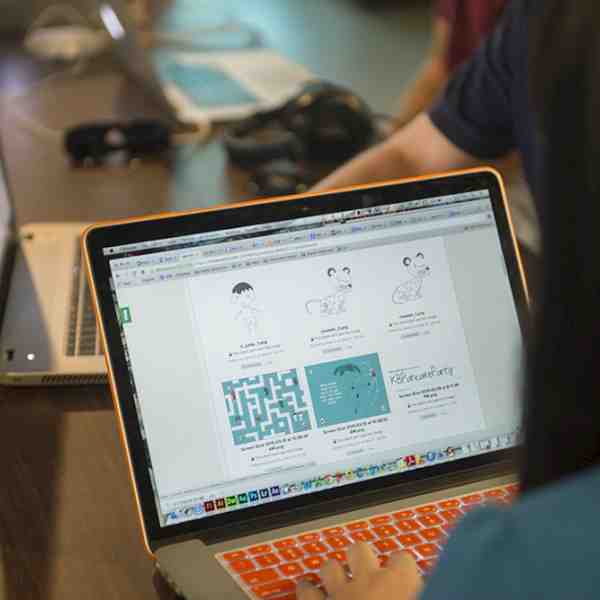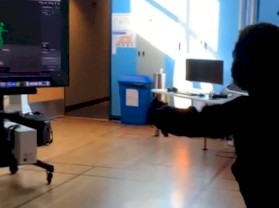The University of Florida’s SEA Change initiative brings together faculty in science, engineering, the arts and more with the purpose of developing and disseminating innovative ideas for research, teaching and service to enhance the campus intellectual environment. The committee comprises nearly 50 members from eight different UF colleges and seven other units who meet regularly throughout the year to talk about ideas that could lead to collaborative or interdisciplinary projects and make recommendations to support innovative, critical and creative work.
One example of a collaborative project that has stemmed from SEA Change is the development of an interactive e-book for children ages 5-7 in the Cardiac Intensive Care Unit (CICU) at UF Health Shands Hospital.
Amy Bucciarelli, a board certified art therapist in Pediatrics, and Amanda Hughlett, a certified child life specialist in the Pediatric Intensive Care Unit and the Cardiac Intensive Care Unit, work closely with one another to help children who are waiting for a heart transplant. Hughlett’s job is to help the children understand what is going on with their bodies and learn more about the procedures they will be going through so they are not as fearful, as well as provide positive coping techniques and expressive activities. Bucciarelli’s job is to help the children process their feelings through visual art.
The idea of an e-book came about based on the difficulties a particular patient was having while he was in the hospital. One of their main goals is the development of new resources for cardiac patients to learn about their condition.
“The few resources that do exist are not visually pleasing, or may even be scary for kids,” said Bucciarelli. “The words may be too complicated or just do not make sense to the children, so we were really looking for something that would meet all of those needs.”
By chance, Bucciarelli was able to connect with Digital Worlds Institute instructor Diana Reichenbach at a SEA Change meeting, and plans for creating the e-book went into full effect.
“I was scheduled to teach an interactive storytelling course in the spring, so I thought it would be a good learning experience for my students to work on a project that has such a meaningful effect and a real-world application,” said Reichenbach. “So, we discussed it and I worked a project into my curriculum.”
Currently, there are eight graduate students in Reichenbach’s interactive storytelling course. The benefit of it being a graduate-level course, said Reichenbach, is that the students have different educational expertise ranging from music and sound to graphic design to programming and are able to combine their knowledge to help one another during the design process.
One thing that makes this e-book stand out from other learning tools in the hospital is the degree of interaction that the children can take part in while learning about the heart. Each page has an interaction programmed into it that engages children in active learning. For example, the fundamental heart function of pumping blood is reinforced in the e-book as the user sees and hears the heart pump.
“What’s inspiring me to do the project is knowing that the patients are going to be able to get the education they need in a very friendly way; in a way that’s familiar and comfortable to them, because I know every day they are approaching things that are very unfamiliar,” said Reichenbach. “I think it’s really meaningful for both me and the students to know that we’re giving a necessary resource to parents and children, adding a very intuitive and friendly way to help educate them on such an important part of their life.”
Right now, the e-book focuses solely on how the heart works, but eventually the team wants to create additional resources. For example, one of the children Bucciarelli has worked with had a lot of energy even though he was extremely sick and hooked up to tubes. “He would run around and get his tubes tangled up, and those tubes are critical to pumping air into the device that is keeping him alive,” said Bucciarelli. “He would not understand why it was a problem when he twisted his tubes, but as a medical team it was critical to let him know. In the future, the goal is to provide more e-books to support children’s needs.”
The goal is to get the first prototype of the e-book out by the end of the spring 2015 semester and then seek grants and funding so it can potentially serve as a model for future resources.





